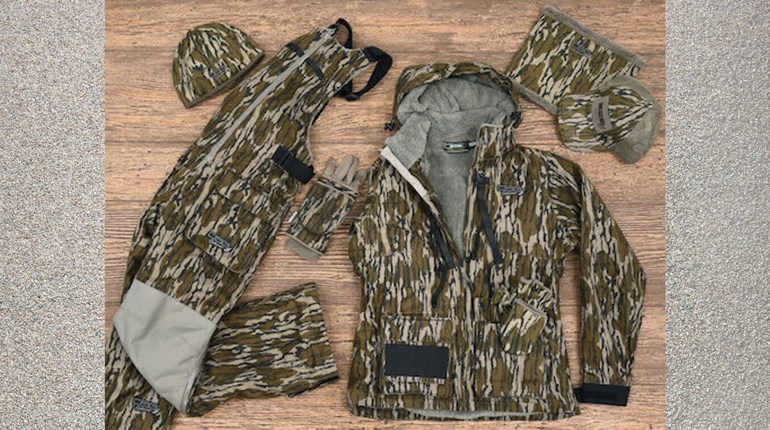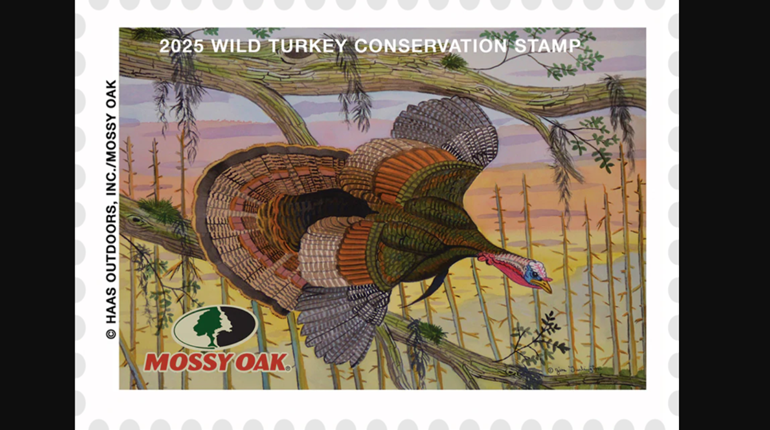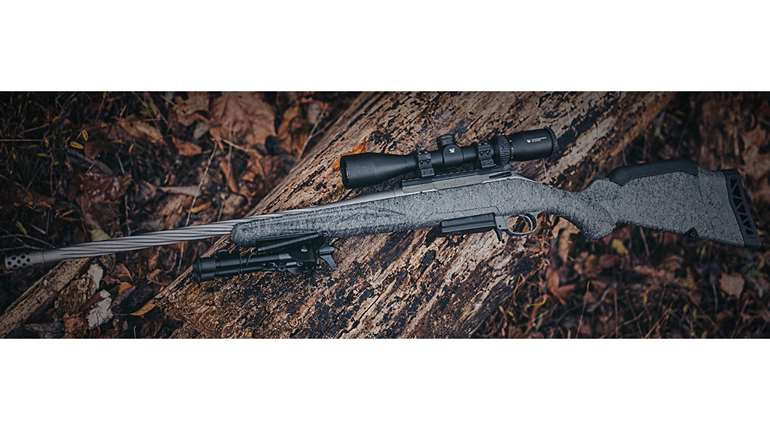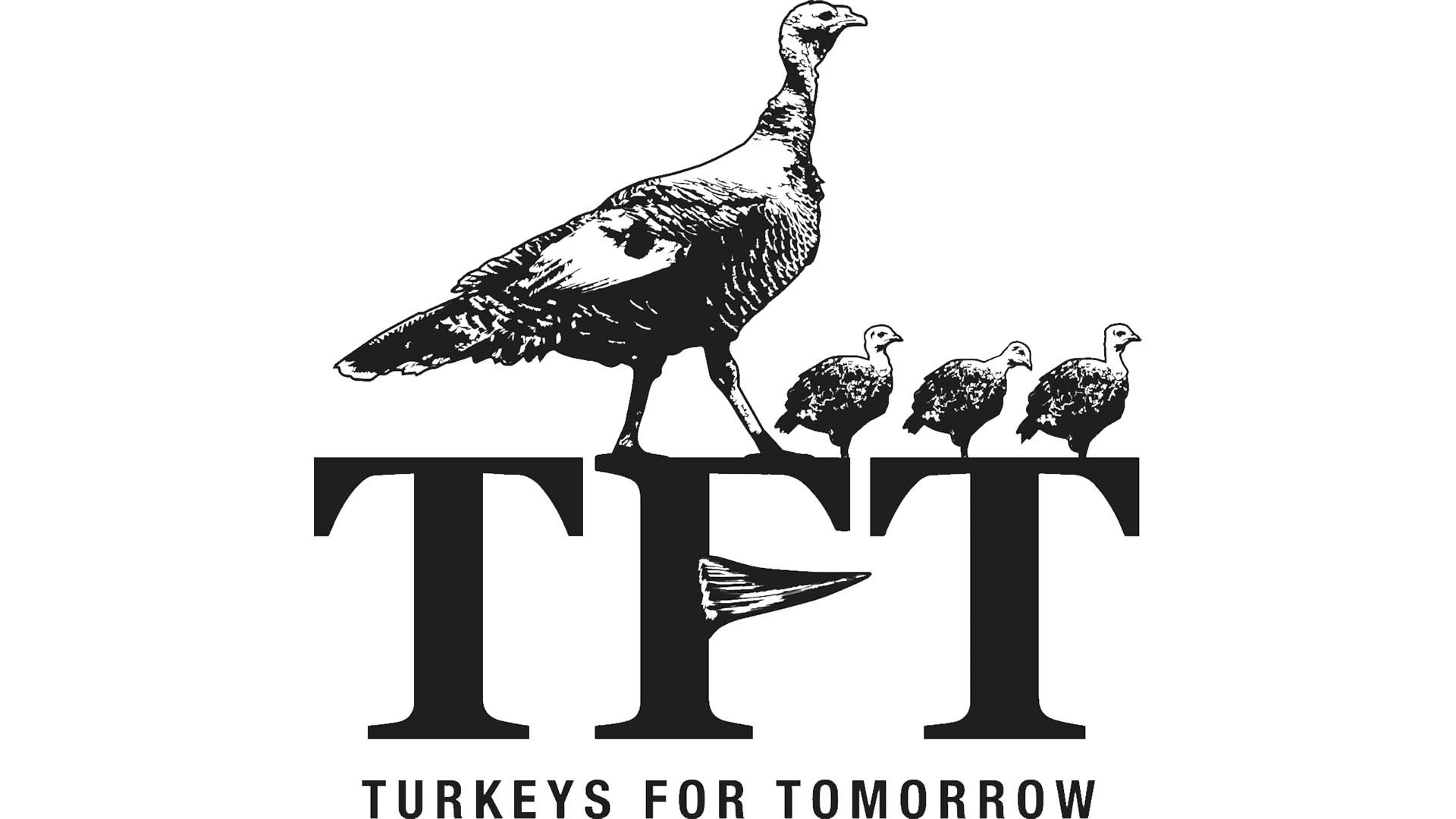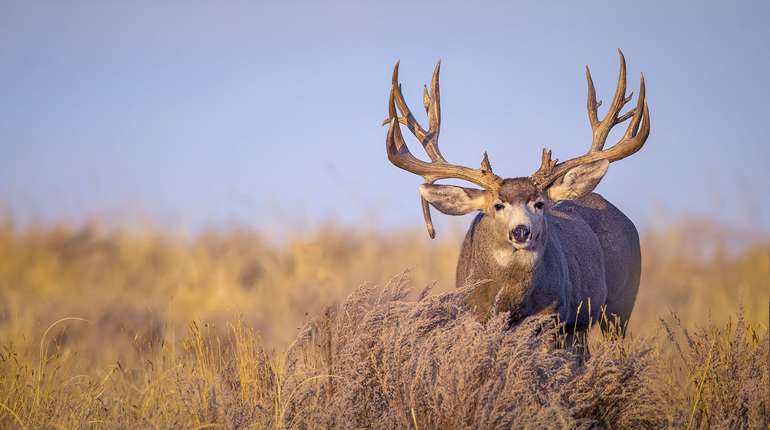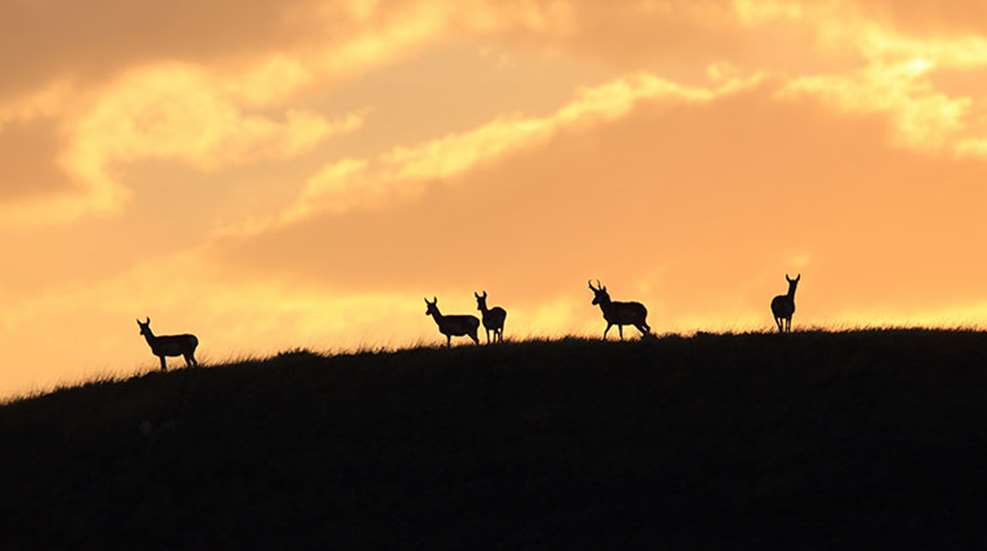
If you have school-age kids you know depression begins to loom in the month of August. Summer is about to end. It’s nearly time to toss the school backpack on a shoulder. For many families this signals an end to summertime fun. It also signals limited opportunities to enjoy upcoming hunting seasons that fall squarely within the school year. However, getting an approved excuse for a hunt during the school week is becoming as difficult as finding an objective news report on the flat screen.
Fortunately one season offers an opening to get in the field before that first bell rings. And if you don’t have young adults in the house you can still play hooky and take in a great hunt. Consider an archery pronghorn hunt in August.
Even though I’ve acquired the title of “empty nester” I still plan an August bowhunt for pronghorns. I partly do it out of habit. It’s a hunt I schedule annually due to the fact it has few other hunting conflicts. September, October and November overflow with hunt opportunities that overlap. Many states open archery pronghorn seasons in mid-August, and you won’t find many other hunts in process.
Nostalgia makes up the chief reason I hunt August pronghorns. For nearly a decade my son and I planned an annual hunt into the public lands of Wyoming to pursue pronghorns before the first school bell rang. Despite my son’s pursuit of a higher education today, the memories of sun and sweat and (I hope) the musky scent of a pronghorn’s neck gland continue to draw me back to the sagebrush. If you and yours would like one more summertime escape, pronghorn country can deliver.
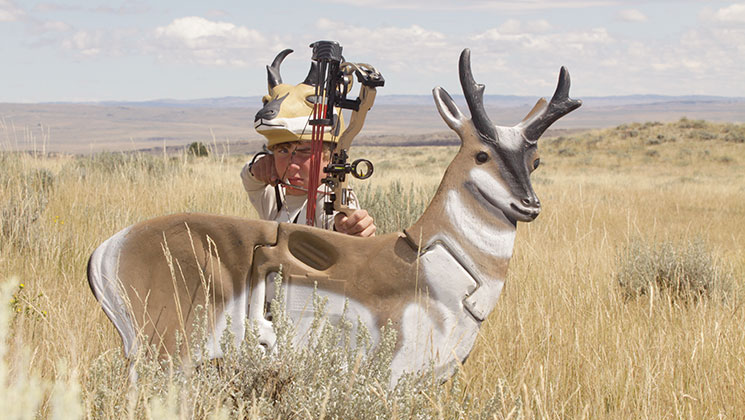
Early-Bird Education
Going hunting is reason enough to consider pointing your truck west in August. The reasons just stack up after that no-brainer. If you have a youngster interested in hunting then that fact should top your list. The chance to hunt a classic big game species with John Wayne views all around has incredible potential to create a lifetime hunter. You’ll have time to appreciate a camp, enjoy the outdoor lifestyle and not be rushed in the process. Weekend hunts are fine, but escaping for a week into America’s outback builds enthusiasm along with a lifelong hunting mindset.
Kelly Glause has been a Wyoming outfitter for nearly three decades. Today he passes the outfitter title to his son Kody and his daughter-in-law Jordan, who operate Heart Spear Outfitters near Casper. Glause is happy taking on the role of guide, and August pronghorn hunting is one of his favorite seasons to showcase Wyoming to appreciative clients. Hunting out of blinds over water is a Glause specialty.
“The weather is perfect the last two weeks in August,” explains Glause. “You can pull off a camp-style hunt out on the prairie. It’s a great time to get kids out and started with a hunt that excites. They don’t have to shoot a 75-pound bow, and antelope numbers are generally high so they’ll have multiple opportunities to watch or take animals. They just have to be patient for one to present the proper shot. And a blind gives you the chance to hunt with them and coach them through any shots.”
A camp-style hunt is exactly the way Heart Spear Outfitters operates. Guests bunk in wall tents that are ideal for the cool, summer evenings. A shower house and cook house provide additional creature comforts and, as Glause says, “it’s roughing it, but certainly not toughing it.”
Another reason to contemplate a late-summer pronghorn hunt is to polish hunting skills for upcoming seasons. It’s the first real hunt of the season. Whether you’re trying to help a new hunter get a handle on buck fever or test your new bow before elk and deer seasons kick off, an August outing gets the job done. You can move beyond 3-D targets and engage with a moving target that could be the start to a mouthwatering dinner.
You’ll also be able to get your so-called sea legs back. Months of career duties and extracurricular activities tend to dull your hunting senses. Nothing sparks your inner predator like donning camouflage, picking up a hunting tool and creeping through the hills in pursuit of game. Polish those skills in August and you’ll have a jump-start on your next hunt.
Every great experience has to have some negatives attached. For summer pronghorn hunters the negatives are easily dealt with, but real all the same. The first negative is that it is summer. Despite most Western regions cooling down at night, daytime temperatures can still climb above 80 degrees. It’s also not uncommon to experience the century mark. That alone doesn’t cancel a trip, but when you hunker in a dark blind the temperatures can spike well above 100.
One year we had a cheap thermometer inside a blind and it teetered at 120. Of course high temps create thirsty pronghorns, and that leads to waterhole success. Glause agrees the heat can be unforgiving, but he notes an even greater challenge is keeping meat from spoiling if you do find success, especially in a remote camp.
“You just have to be ready to cool the animal and break it down immediately,” Glause explains. “Get him skinned and have some good game bags so flies won’t get on it. And most of all, be prepared to cool the meat. We fill gallon milk jugs with water and freeze them ahead of time. In camp we store them in coolers until we get an antelope down.”
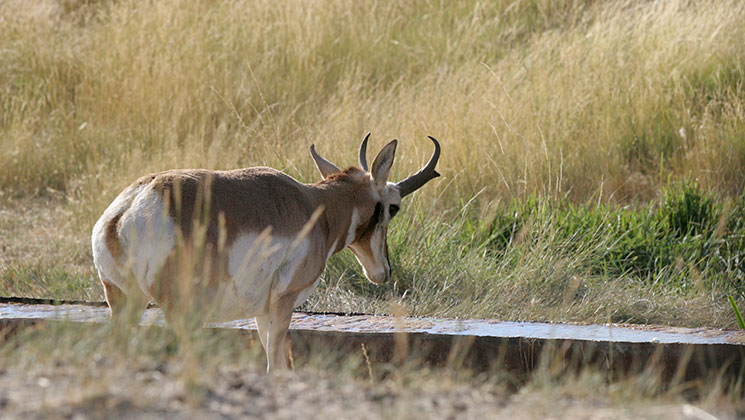
Pronghorn Patterns
Pronghorns are the sole survivor of a lineage long gone from North America’s steppe, but they still act like other big game you’ve hunted. In brief, they follow patterns. Better yet, they don’t tuck into deep, dark cover during daylight so you can scout and hunt all day long.
Sage, forbs and grasses that also evolved in this savannah environment provide nutrition for the primarily browsing animal. Hayfields also attract pronghorns to nip on new growth, but guides like Glause focus most of their efforts on water over food in the parched country. During some years water becomes scarce and only available from reliable sources like springs, large ponds or creeks that drain from nearby mountains. Summer pronghorns settle into a comfortable lifestyle moving between reliable food and limited water. Older bucks and bachelor groups still maintain independence from the main herd. If you find a group one day it’s very likely it’ll be there the next.
“You can typically pattern them the entire month of August,” says Glause. “September is the pronghorn rut, and after the first, hard frost the bucks will begin stirring and roaming. That’s when the predictability goes out of your hunt. Up until then you can almost guarantee they’ll continue to visit water, especially between 8 and 10 in the morning.”
Like hunting whitetails, scouting can play a critical role in success. Find a pronghorn buck in a summer holding pattern and you can map its lifestyle. Whether the animals rely on a rancher’s alfalfa field for nutrition or mesa-based forbs, once you discover their homeland their patterns remain amazingly consistent until breeding or weather prods a change. Hunting pressure can also make pronghorns adjust, but August pressure seldom reaches a fever pitch as it does later during the firearm opener.
“We’re out and about before the season opener in mid-August and know where the antelope are living,” notes Glause. “They typically stay there and on the same pattern until the end of August. One thing that can change that is a big rainstorm. Fortunately for us, the soil in our outfitting area is sandy so even a large rain event drains fast and patterns return quickly until the rut starts.”
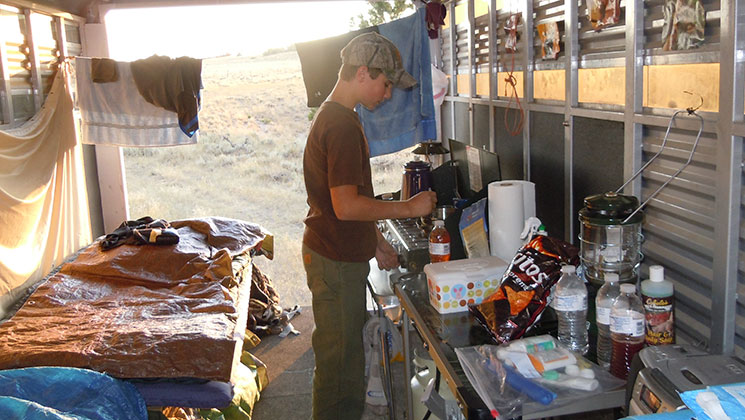
It’s not difficult to read the sign and set up a perfect waterhole trap. Visit water sites where you’ve observed activity and inspect the mud for tracks. Be particularly analytical of the location of the highest density of tracks. Ponds generally have a muddy edge and one that’s more hoof-friendly. Pronghorns, like most animals, shy from the muck and they rarely bust through cattails to reach water. Determine the prevailing winds then set up your ground blind downwind of where most of the drinking takes place and where a broadside shot in the tracked-up area might be possible. You’re ready for a sweat-lodge experience.
On Aug. 22 last season, after three days of hunkering in a blind near a well-used waterhole, I got my chance at a Wyoming buck. The 20-yard shot was perfect for a beginner or a seasoned pronghorn hunter like me. The buck cautiously waited and watched as a dozen or more does watered. When he felt confident of the situation, his lip smacking stopped and he marched right up for a drink. In the darkness of my Double Bull blind I drew my Mathews bow and not one eyeball turned my way.
Glause adds that even if you find yourself staring at a “water-everywhere situation” you still can hunt water. His theory is that a certain pronghorn segment will be habitual and return to its main source of water.
If you do find yourself staring from a blind without a pronghorn within shooting distance you don’t have to take the kids school-clothes shopping yet. Remember that pronghorns keep daytime office hours so you can continue the hunt by utilizing another strategy.
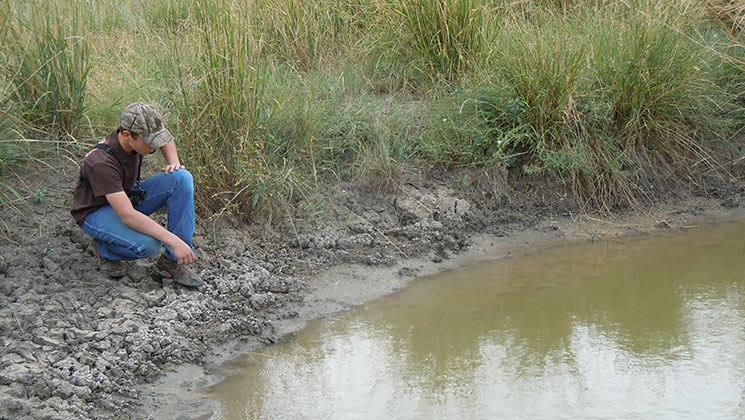
Freelance Your Fun
Maybe you have a condition that doesn’t allow you to sit for endless hours in a tiny tent. You might be a free spirit, too. Ditch the water watch. You’ll be giving up an experience more entertaining and educational than an evening of viewing the “Animal Planet” as thirsty desert visitors hydrate, but you can hunt pronghorns with a nomadic attitude.
Begin with a spot-and-stalk approach. High pronghorn densities and bucks still living solo, or in a bachelor mindset in late summer, give you an edge. Your goal is to locate a loner or group and plan a stalk. A perfect scenario is a solo buck bedded in rolling terrain. You’ll only be dealing with one set of eyes instead of a herd with enough combined eyeball power to challenge the Hubble Telescope. Even so, a single buck still represents a stalking struggle. Pronghorn eyesight bests your six-power binocular. Blend that with perfect placement of 2-inch-diameter, bulging eyes for nearly 360-degree visibility and you have a surveillance system that Las Vegas casino managers would invest in. Yes, spot-and-stalk can be challenging.
A misty day that could slow waterhole traffic helps hush your footstep stalk. Staying out of sight behind terrain and staying downwind is critical. And don’t be a peeker. One too many looksees over a hill has been the downfall of many stalks. If you do get within arrow-launching distance, you will need to come up from directly behind the pronghorn and only rise to draw when it is looking straight away. Did you get all that?
If you still want to abandon a domed domicile, you can slip through pronghorn territory with a decoy-duping strategy. Pronghorns are social animals. Despite the fact the best pronghorn decoying occurs in the mid-September rut utilizing a subordinate buck decoy, you can still tempt a buck into a meeting in August. Any pronghorn seeing a fellow survivor from the Ice Age could walk over for a reunion. You can also slip in close to pronghorns accustomed to Western livestock utilizing a cow decoy or, if practical, real, trained livestock.
In August the social enticement requires perfect execution. Don’t slip in too close to an unsuspecting buck. Work to within 200 or 300 yards behind a rise. Now raise your decoy slowly and stake it so you can operate the bow. Peer through viewing slots on the decoy or beneath it, veiled by grass. If a buck curiously approaches, donning a pronghorn head hat such as the Be The Decoy Speed Goat Hat is a great way to fool him as you rise to shoot. It also includes a shirt to match a pronghorn’s color. The mimicry makes the buck stay a second or two longer as it sorts out in its mind exactly what’s developing. Youth hunters will enjoy the dress-up game, and having a second hand along to operate the decoy leaves the shooter free to think about shots rather than decoy management.
Popular decoys include two-dimensional models by Flambeau and Montana Decoy. I prefer the molded Flambeau MAD CommAndelope over the photo versions. It stands up better on guaranteed windy days due to its molded plastic weight. For feather-light convenience and authenticity you can’t beat the Montana Decoy, though.
Few pronghorns live a livestock-free life. They interact with cattle, sheep and horses throughout the year in the West. Cattle decoys, such as Montana Decoy’s Moo Cow, give you a bovine disguise to creep into bow range of bucks. Move slowly to mimic the grazing nature of a cow. Stopping often helps. If you reach your shooting range, it’s best to hand over the cow decoy wrangling to a partner as you prepare to launch. It may take an hour or more to ease into archery range, but pronghorns feel right at home with livestock.
Few hunters will have this convenience, but if you own a gentle horse, you can do the same with a living decoy. A hungry horse is best as it will graze towards the pronghorn with you hiding behind it. Make sure to practice shooting beside the horse beforehand so the “thwap” of the bowstring doesn’t surprise the horse and send it galloping to the next county. And as with the manufactured decoy, having a second hand along allows the shooter to focus as a partner or youth plays cowboy.
“Archery hunting, especially in late August, is my favorite time of the year,” says Glause. “Personally, when I’m able to hunt after all my hunters fill, I prefer that time period for antelope hunting. I pack a lunch and water bottle, and I’m famous for taking along a paperback book in the blind to hunker down for the day. Oh yes, I also take along a bag of sunflower seeds. Even if I don’t get an antelope it’s a good time to contemplate.”
August doesn’t rank high on the calendar for most hunters. Nevertheless, if spending quality hunting time with a young hunter is a priority or if getting a jump-start on polishing your hunting skills is important to you, then you should consider archery pronghorn hunting—as Glause makes clear, even if only to contemplate during the hunt. You can’t go wrong in August.
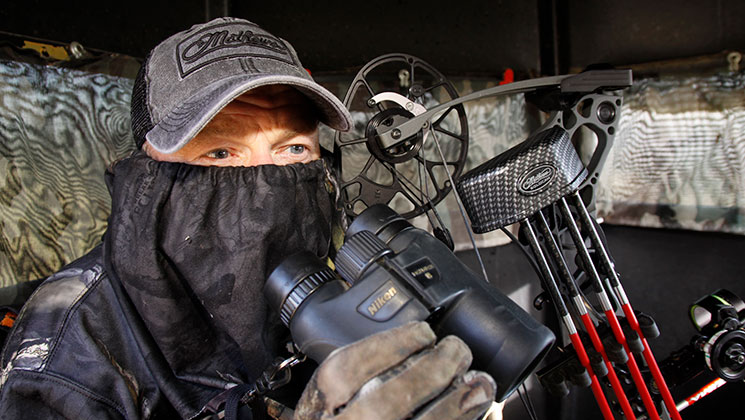
Mossy Oak Camo & Primos Double Bull Blinds
Blind hunting has shot off the charts in popularity. Affordability, comfort and easy set up top the list of reasons for this increase. Mossy Oak released data from True North Marketing in 2016 that documents 64 percent of hunters used ground blinds as a preferred method of hunting. A 2017 follow-up survey indicated 88 percent of hunters donned dark clothing while in a blind.
Light bulbs lit up at Mossy Oak, and the company soon launched the Eclipse Camouflage pattern.
Its sole purpose is to blend to the dark interior of a blind. Mossy Oak accomplished that with shadowing elements blended into the black elements utilizing cutouts of Break-Up country. It veils the human form for additional benefits while hiding in a blind. I used it on my 2017 pronghorn blind hunt and it performed as advertised. Pronghorns or cows never knew I was in my Double Bull blind.
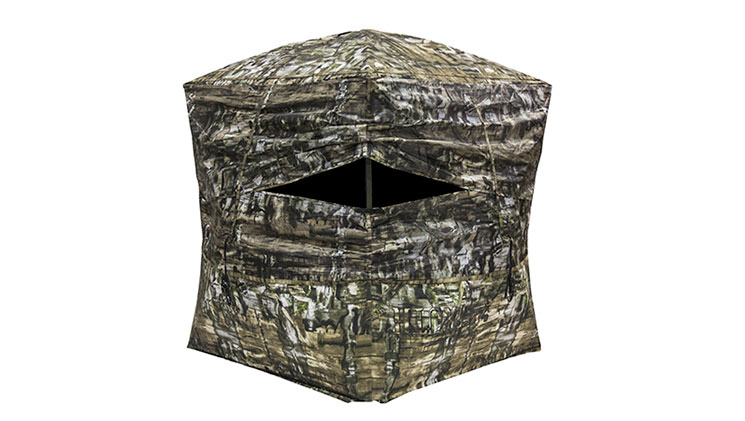
Speaking of Double Bull Blinds, check out one of the coolest innovations to hit the hunting scene: the Primos Double Bull SurroundView Blind. What sets it apart is unlike other blinds that only offer one or two windows to effectively see out of while hunting; the SurroundView is constructed of innovative fabric that allows you to see out of every wall. You can see everything around you, but animals cannot see into it. You truly have a full view of everything going on around you. It is indeed revolutionary for all hunting. The blind is built in a hub-style fashion for quick deployment and easy take-down. It’s rugged and has a limited lifetime warranty. Three models are available.
August Pronghorn Units
Pronghorn antelope are found west of the Mississippi. All such states there, except for Washington, currently have archery seasons for pronghorn. As a bonus, the majority also have August archery hunting seasons including those noted below:
• Arizona: draw units and first-come unit; units opening throughout August; Arizona Game and Fish Department, azgfd.com.
• California: draw units, early August opening; California Department of Fish and Wildlife, wildlife.ca.gov.
• Colorado: draw and unlimited units; mid-August opening; Colorado Parks and Wildlife, cpw.state.co.us.
• Idaho: draw and unlimited units; mid-August opening; Idaho Department of Fish and Game, idfg.idaho.gov.
• Montana: draw units; mid-August opening; Montana Fish, Wildlife and Parks, fwp.mt.gov.
• Nebraska: unlimited; late August opening; Nebraska Game and Parks, outdoornebraska.gov.
• New Mexico: draw units; units opening in early and mid-August; New Mexico Department of Game and Fish, wildlife.state.nm.us.
• Nevada: draw units; early August opening; Nevada Department of Wildlife, ndow.org.
• Oregon: draw units; units opening throughout August; Oregon Department of Fish and Wildlife, dfw.state.or.us.
• South Dakota: unlimited; mid-August opening; South Dakota Game, Fish and Parks, gfp.sd.gov.
• Wyoming: draw units; mid-August opening; Wyoming Game and Fish Department, wgfd.wyo.gov.













